It looks gross, it smells gross, and it can be a pain in the neck to get rid of: it’s mold! Maintaining a mold-free home is crucial for a safe and healthy living environment. Mold growth in your home can lead to allergies, respiratory problems, and even structural issues. Preventing its growth is vital.
This helpful guide will explore how to spot mold in your home, ways to prevent it, and the necessary steps to take if mold is detected. Learn about the conditions that encourage mold growth, the signs to look for during mold inspection Santa Rosa CA, and how to tackle mold once it’s identified.
What Environments Promote Mold Growth?
Understanding the environments that foster mold growth is the first step to prevention. After all, if you don’t know where to look, you’ll never find it!
Mold thrives in warm, damp environments with limited airflow. Consider checking the following locations regularly for mold growth:
Basements
Often cool and moist due to being underground, basements can be prone to flooding or leaks, making them perfect breeding grounds for mold.
Bathrooms
High humidity from showers or baths can lead to mold growth, especially if there isn’t adequate ventilation.
Kitchens
Besides mold that can sprout from old food, cooking produces steam, and leaks under sinks or around dishwashers creating pockets of moisture that mold can exploit. Mold in the kitchen is especially insidious as it can affect the food you eat.
Laundry Rooms
Wet clothes and poorly vented dryers can lead to increased humidity levels in laundry rooms, which can cause mold to form.
Attics
Poor insulation or roof leaks can cause moisture buildup, promoting mold growth.
Crawl Spaces
The enclosed and often damp conditions in crawl spaces make them vulnerable to mold. To minimize the risk, ensure proper ventilation and address any leaks promptly.
How to Identify Mold in Your Home
Finding mold early can save you precious time and money while also protecting you and your family’s health. Here’s what to look for when inspecting your home:
Distinct Odor
Mold often produces a musty, earthy smell that is distinct and unpleasant, particularly noticeable in confined spaces like basements or attics.
Visible Signs
Mold can appear as dark spots, streaks, or fuzzy patches on surfaces like walls, ceilings, or furniture. Check beneath sinks, behind appliances, and around windows, mold loves to hang around in nooks and crannies.
Water Stains
Along with being unsightly, discolored stains on walls or ceilings can indicate past or ongoing moisture issues, which may also harbor mold.
Health Symptoms
If family members experience persistent allergies, asthma, or frequent colds, mold spores could be affecting the air quality in your home. Don’t forget your furry family − Even cats and dogs can experience negative symptoms like sneezing or lethargy from mold exposure!
Essential Tips for Preventing Mold Growth
Prevention is key to keeping your home safe and healthy. Here’s how to create an environment that discourages mold:
Control Humidity
Humidity can cause mold to grow on walls and even ceilings. Keep indoor humidity levels below 50% using dehumidifiers and air conditioners, especially in basements and attics.
Ventilation
Use exhaust fans to ventilate bathrooms, kitchens, and laundry rooms. This can help to reduce moisture build-up from daily activities like cooking and showering.
Fix Leaks Promptly
Repair any leaky roofs, windows, or pipes as soon as possible to prevent water from accumulating and creating a mold-friendly environment.
Monitor Drainage
Ensure gutters and downspouts are clear and direct water away from your home’s foundation to avoid seepage into walls, your basement, or crawl spaces.
Mold-Resistant Products
Consider using mold-resistant paint and drywall in high-moisture areas like bathrooms and basements for extra protection. These products can help to prevent mold growth in areas where ventilation and humidity control may be difficult to achieve.
Regular Cleaning
Clean and disinfect bathrooms, kitchens, and other damp areas regularly to remove dirt and mildew that can support mold growth. Certain cleaning agents are anti-fungal as well as anti-bacterial, these can be particularly useful in preventing mold growth.
Air Circulation
Open windows or use fans to improve airflow, particularly after cooking or showering, to reduce moisture buildup.
Inspect Regularly
Most professionals encourage yearly home inspections for mold growth. However, if you live in a humid environment you may need to check more frequently. When you inspect your home, check hidden areas like attics, crawl spaces, and behind appliances to catch mold before it spreads.
What to Do If You Find Mold
If you discover mold in your home, don’t panic! You’ll need to act quickly to minimize its impact and prevent it from spreading. Here is a list of steps you can take if you come across a mold infestation in your home:
Safety First
Wear gloves, goggles, and an N95 respirator mask to avoid direct exposure to mold spores when inspecting or cleaning.
Contain the Area
Isolate the affected space to prevent spores from spreading to other parts of the house. Turn off the HVAC system to prevent spores from traveling through air ducts.
Small Areas
For mold patches covering less than 10 square feet, scrub the area with soap and water or a bleach solution (1 cup of bleach per gallon of water). Ensure the area dries completely after cleaning.
Large Infestations
If you find mold covering more than 10 square feet of your home or if you notice recurring mold, it’s best to consult a professional for a safe and thorough removal. Attempting to handle extensive mold problems yourself can expose you to dangerous health risks.
Secure Your Home Against Mold with Bravo Restoration
A mold-free home is essential for healthy living. By understanding the conditions that promote mold growth and following preventative measures, you can protect your family and property. If mold is found, address it promptly to minimize risks.
For comprehensive mold remediation and water damage restoration services, reach out to Bravo Restoration. Contact us at Bravo Restoration online or by phone at (707)837-0675 today!

